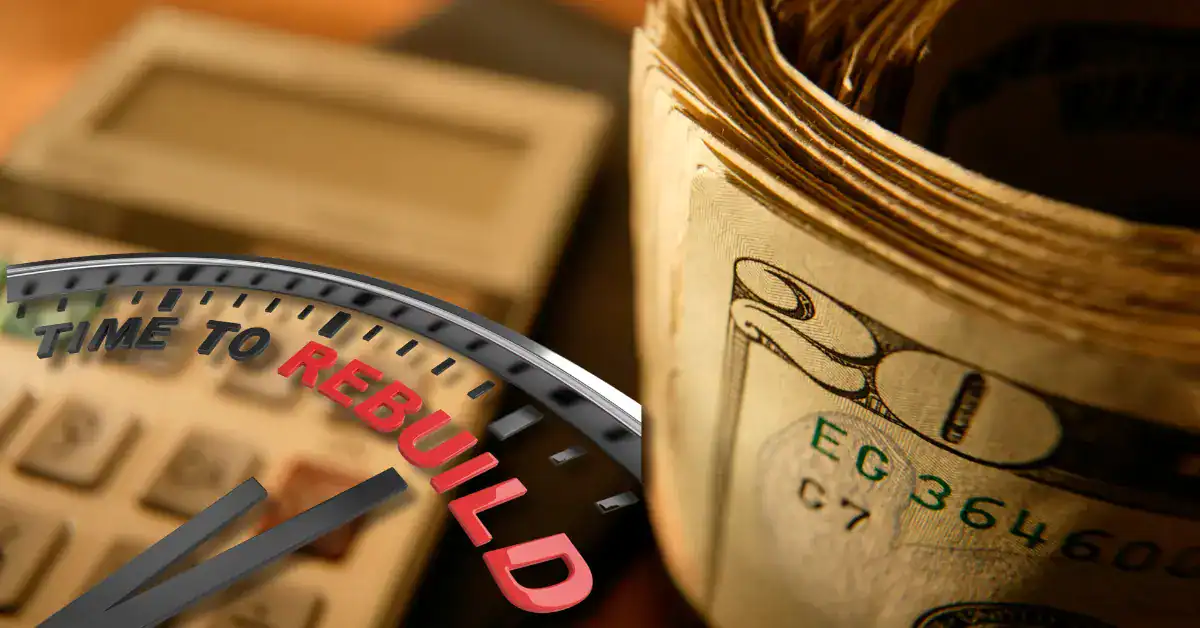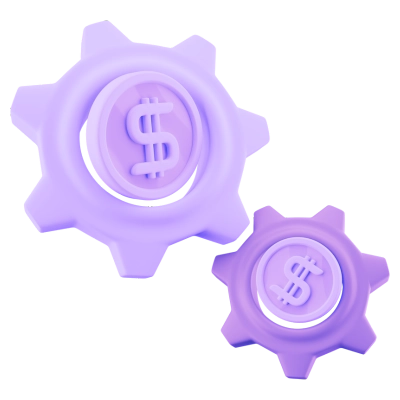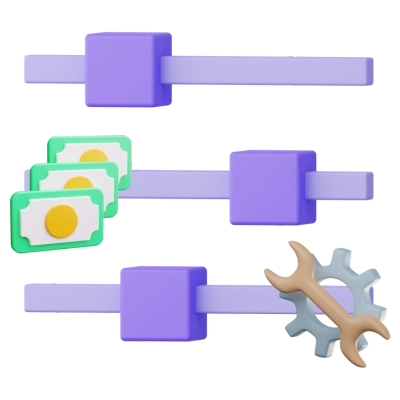The Bankroll Rebuild: How to Bounce Back After a Major Losing Streak

Look, there is no way to sugarcoat losing. It sucks when it happens once or twice. But a losing streak? They really suck. One minute, you’re feeling like you’re reading the market or the game just fine, and the next? It goes left. The bets that used to hit aren’t hitting, your bankroll is in the toilet, and the confidence you had? That’s gone.
If you’ve gambled for any period of time, you’ve been here. It doesn’t matter how good you are; losing is baked into the game. But what separates a washed-out bettor from someone who comes back stronger is how they handle the aftermath of a losing streak.
We aren’t going to bore you with generic “don’t chase losses” warnings (although you should never do that) or cliche motivational quotes. No, we have five practical, proven ways that will help you rebuild your bankroll after it takes a serious hit. It’s like a hard reset button; a way to regroup mentally, improve your strategy, and get back on track.
Before we get into the steps, know that most bettors don’t handle losing streaks well, and that’s normal. Who likes losing? Nobody, that’s who. So they double down when they absolutely shouldn’t, or they pretend like nothing happened and keep betting as usual, hoping that things will turn around. That’s a one-way ticket to going broke.
If you’re reading this, it’s because you don’t want to make that same mistake. And we are gonna teach you how to rebuild your bankroll the right way.
Step 1: Pause and Analyze What Went Wrong
Rebuilding your bankroll starts with taking accountability, not taking action. You can’t fix what you won’t face! The following is how you can analyze what went wrong.
Look At Your Betting History Honestly
If you’ve kept a betting log (even if it’s just your sportsbook history), now’s the time to go through it. How many of your bets were based on research vs. vibes? Were you increasing bet sizes as the losses piled up? Did you abandon your usual process?

Were Emotions Driving Your Decisions?
Losing streaks usually trigger what we know as “desperation bets,” aka chasing losses, revenge betting, or hammering parlays out of sheer frustration. These aren’t only bad decisions; they’re emotional responses that are masquerading as strategy. Catching this behavior in hindsight is the first way to fix it.
Understand The Patterns That Caused The Downturn
Were you betting too much? Taking too many long shots? Ignoring injury news or market movement? Sometimes the problem is more than bad luck; it’s also bad betting habits. And the longer you ignore those patterns, the harder they are to break.
Why A Real Post-Mortem Matters
A serious review has nothing to do with blaming yourself or feeling bad; you are just getting clarity. You need to know if the losses stemmed from poor judgment, variance, or a flawed system. Without that clarity? You’ll be rebuilding on sand.
Step 2: Reset Your Mindset
You can’t out-bet a broken mindset. If you’re still emotional, tilted, or clinging to your past losses, you’re not ready to rebuild.
Mindset Drives Recovery
After a losing streak, your mental state can sabotage you. You could become overly risk-averse or be impulsively aggressive. Either way, that’s not a strategy; it’s emotional fallout from the damage.

Recognize The Warning Signs Of Tilt
Tilt isn’t always an obvious state. It could be small, like chasing a win to feel “back on track” or overanalyzing every edge because you’re afraid of being wrong again. Spotting tilt as early as possible saves bankrolls later on.
Use Tools To Create Emotional Distance
Basic practices like journaling your bets, meditating before high-stakes decisions, or setting a strict walk-away timer can work wonders. No, these aren’t weird spiritual hacks; they’re structured habits. And structure is what keeps emotion from running away with your bankroll.
Taking a break doesn’t mean that you are giving up. It means that you’re willing to let the need to bet cool off before it becomes something that’s self-destructive. Take a few days off, a week, whatever feels right for you, and use it to recalibrate.
Something as simple as writing down “Why am I betting this?” before you hit submit can create enough friction to stop a reckless pick!
Don’t Rush Back So You’ll Feel Better
After a loss, immediately betting again could feel like you’re getting back in the saddle, but in reality? It’s avoidance. Don’t be rash, and make sure that you’re in a clear headspace before you start betting again.
Step 3: Rebuild with a Smaller, Smarter Bankroll
Once the cobwebs have been cleared from your mind and you’ve dissected your past mistakes, it’s time to deal with the bankroll itself. And you won’t be rebuilding from where you left off. No, you’ll be starting from a lower base, and that’s on purpose.
It’s not a punishment! You are setting up a system that gives you the space to recover without compounding the damage.
Define A New Bankroll That Makes Sense For Your Current Reality
Whatever your bankroll was before the slide, forget about it for now. You need a new number that’s based on what you’re comfortable risking, not what you lost. Trying to “get back” to that original number mentally anchors you to the streak itself. Start with a clean slate.

If you’re playing with money you can’t afford to lose, or trying to “win back” rent or grocery money, that’s not rebuilding. You’re gambling with your livelihood, and that’s something that no one should ever do.
Pick a number that you can isolate, track, and lose without putting yourself in a worse spot. Keep it separate from your personal finances. Treat it like an account for a small business; you’re reinvesting in smarter bets, not pressing your luck.
Stick To Low-Volatility Bet Sizes And Don’t Overthink It
When you’re starting over, there’s no reason to get cute about it. Flat bets, which use the same amount on every play, work well for a reason. They help you avoid making emotional decisions and keep your variance manageable.
Advanced models like the Kelly Criterion can come into play if you’re working with solid edge projections, but if you’re still refining your process, that’s probably not where you should start.
For most people who are in recovery mode, keeping each bet between 1% and 2% of your bankroll is more than enough. Don’t double up and do not chase!
Skip The Long-Shot Parlays And ‘One Big Hit’ Mentality
As we said, rebuilding your bankroll is a structured task, so you should not be taking huge risks. That means no three-leg parlays “just in case” or late-night overs because the payout looks good. This isn’t the time to do any creative gambling!
Long odds look super tempting, especially if you’re down bad, but they’re usually just a way to prolong the losing streak in smaller bursts. You’re not trying to break even with one win. You’re trying to build a process that works.
Track Everything
If you weren’t tracking your bets before, now’s the time to start. Use a basic spreadsheet or a tracking app, whatever feels manageable for you. Write down the bet type, stake, odds, reason for the pick, and outcome.
You aren’t micromanaging, you are being accountable. Seeing your results laid out forces you to stay honest. And when you hit a stretch of wins again, you’ll know exactly why they’re happening.
You don’t need to have a massive bankroll to be a serious bettor. But you do need a plan. And this is where that plan takes shape.
Step 4: Refine Your Strategy & Specialize
This is where most bettors slip back into their old routines. They fix the bankroll, take a few days off, and then go right back to using the same combo of guesswork and habit that got them into trouble in the first place. If you’ve reached this stage, it’s time to stop playing generalist and start building something that works because it’s concentrated, not in spite of it.
This step isn’t reinventing yourself as a full-time analyst. All you are doing is getting a better read on how you bet, what’s been worth the risk, and where you’ve shown control over outcomes.
Stop Betting Across Everything And Concentrate On One Area
You don’t have to bet every market that opens. That kind of a scattershot approach just causes more unknowns. When you’re recovering, what you need is fewer moving parts.
Pick one sport, or one corner of a sport, and get familiar with it on a granular level. If college basketball second-half totals were your strength, build around that. If NFL alt lines kept burning you, forget ‘em. Being selective about what you bet on is not passive; it’s strategic.

Concentrating on a single area means that you won’t be wasting your time breaking down markets that you don’t understand. It also means fewer surprises.
Sort Through Your Past Bets By Category
Go back through your tracked bets and group them into simple categories, like point spreads, totals, moneylines, props, futures, etc. Then figure out which of them made sense at the time. Which ones would you place again? Which were built on guesses, hunches, or “I just liked the matchup”?
This is how you figure out where your thinking has been repetitive, and that’s where the foundation is.
You’ll likely find that you were much more disciplined in some categories than in others. That’s your cue to tighten things up; not by betting less, but by betting smarter.
Identify The Bets That Showed a Solid Process
Winning doesn’t always mean that you made the right call. And losing doesn’t mean the logic was flawed. An important part of rebuilding is reviewing your bets through the lens of process, not just the result.
- Did you thoroughly handicap the matchup?
- Did the line move in your favor after you made the bet?
- Were you relying on public narratives or your own work?
Start filtering every past wager through those kinds of questions. It gives you a better read on whether your approach is reliable or if you were just hoping to get lucky.
Use More Structure
You don’t need a complicated betting model to build better habits! But if your previous bets came from hunches or rushed decisions, this is where you can change that. Start incorporating real tools, like tracking apps, matchup sheets, injury reports, and line history..
Write down why you’re making a pick before you make it. Add in a confidence rating. Compare your own number to the market. The steps aren’t for show; they challenge you to think clearly before that money leaves your account.
Step 5: Gradually Scale Back Up
Eventually, the balance comes back. You’ve been betting carefully, sticking to one market, and seeing some progress. Your bankroll’s growing again, hallelujah! And now is the time when your discipline will be tested.
Because after all the restraint and recalibration, you could get arrogant and bold with your bets, like raising your unit size overnight or throwing a chunk of winnings on something “you’ve got a feel for.” That’s where a lot of recoveries go off course.
Scaling up should feel boring. If it feels exciting, you’re most likely pushing it too hard.
Don’t Raise Your Unit Size because You’ve Had a Good Week
A few wins in a row aren’t a sign that you should start doubling your stake. Give yourself more to go on than a mini hot streak. If you’ve logged 50+ bets with your rebuilt bankroll and the results are headed in the right direction (positive closing line value, higher win percentage, tighter decision-making), then it’s time to talk about adjustments.
Until then? Keep the same stake size. What you’re doing is working, and you don’t have to add unnecessary risk to prove it.

Set Milestones That Trigger Growth
Rather than randomly deciding when to raise your bet size, create some checkpoints! If your bankroll grows by 25%, increase your unit size by half a percent. Build in structure, so that scaling up feels like you’re following a rule and not chasing a hunch.
This gives you so much more than financial protection. It gives you a system to rely on when the temptation to get aggressive comes back.
Be Cautious When Reintroducing Higher-Risk Plays
If you’re someone who likes to do occasional props, parlays, or alternate lines, you don’t have to cut them out forever. But when you start bringing them back in, cap them at a small percentage of your betting volume. These kinds of wagers can wreck all the progress you’ve made if you aren’t cautious.
If your strategy only works when you hit a 12-to-1 payout? Sorry, but that’s not a strategy.
Use Safeguards To Keep Yourself Grounded
When you do raise your unit size, keep the same guardrails in place. Use win/loss limits for a day or a week. Track your emotional state when you make bigger bets. If you find yourself justifying bets out of boredom or frustration again, pull it way back.
And don’t be scared to take another break if things begin to slip again. Just because you’re scaling up doesn’t mean you’re immune to a backslide—no one is.
Mistakes to Avoid During a Rebuild
You’ve put in the work by reviewing your losses, resetting your thinking, and rebuilding a whole new approach, but you aren’t out of the woods. It’s pretty much effortless to fall back into the same patterns that created the whole mess in the first place. Recovery takes more than strategy. It takes self-awareness.
The following are some of the biggest and most common mistakes that people make while they’re trying to turn things around.
Betting with rent money, borrowed money, or anything that’s tied to real-life obligations changes your behavior. Every decision is loaded. You second-guess, you panic, and you tighten up, and not in a smart way, but in a survival mode kind of way.
When you’re playing scared, you’re not analyzing, you’re reacting. That leads to weaker bets and frustration. A real bankroll is one that you can separate from your personal finances without flinching.
Live betting looks like a way to be opportunistic, but it moves super fast and takes sharper instincts than most bettors have, especially on the heels of a losing streak. One missed cue, one snap decision made out of habit, and you’re back in freefall.
If you’re still recalibrating your judgment, stick to pre-game markets. Give yourself the space to think. There’s no reason to get into high-speed betting until you’ve rebuilt enough structure to stay calm and focused under pressure.
Hot picks, Discord group plays, Twitter (X) threads full of confident strangers can appear to be good shortcuts to relevance. But if you’re tailing without understanding the logic behind the bet, the only thing you’re doing is outsourcing your recovery.
This phase of your rebuild should be about reinforcing your own system. That doesn’t mean that you can’t learn from others, but it does mean every bet you make should go through your filter first.
The easiest way to ruin your progress is to pretend the streak never happened. Once you win a few and the account balance starts looking better, you can feel like you’re “back” and start firing off bets like you did before.
But if you haven’t internalized what triggered the slide, if it was tilt, emotional plays, chasing, lack of prep, it’ll all repeat. You’re Groundhog Day-ing yourself, and next time? It could be worse.
A solid rebuild won’t only fix your balance; it also changes how you think. This part isn’t optional, so don’t treat it as such!
Final Thoughts: From Rock Bottom to Recovery
We all talk about winning, but no one really talks about losing. Why would they? It’s a sucky feeling to get wiped out.
And even though it’s hard to swallow, losing is how you learn. You don’t need to learn lessons when things are going great. But when it goes wrong? That’s where the work starts.
It’s not easy to do, but it has to be done if you want to rebuild. You can’t bury your head in the sand and act like it didn’t happen. You have to be honest with yourself and stop, have the self-awareness to adapt, and be patient enough to earn your way back without regressing to the same bad habits and so-called shortcuts.
The losses sucked. They always do. But they also gave you something to work with. Now? You’ve got a chance to take that experience and build something that’s way sturdier. It’s by no means a perfect system, but it is the smartest way to bet.
You’ll hit cold streaks again. You’ll make bets that you regret. But if you follow the five steps and stick to your structure, the streaks don’t have to take you out of the game. They just become what they’re supposed to be, and that’s temporary.
Here’s the TL;DR version of what we covered:
- Losing streaks will happen. It’s what you do next that decides how long they last.
- Start with a full review of your past bets. The good, the bad, and everything in between.
- Walk away long enough to clear your head before you bet again.
- Scale down your bankroll and build new habits around smarter, smaller bets.
- Concentrate on one area of the market; it should be one where your decision-making is the strongest.
- Raise your unit size slowly, with direct rules and checkpoints.
- Don’t make moves that are borne from panic moves, copycat picks, or emotional bets.
- Learn from the slide; don’t bury it and act like it’s not happening! That’s how you can avoid making the same mistakes twice.

Alyssa contributes sportsbook/online casino reviews, but she also stays on top of any industry news, precisely that of the sports betting market. She’s been an avid sports bettor for many years and has experienced success in growing her bankroll by striking when the iron was hot. In particular, she loves betting on football and basketball at the professional and college levels.







